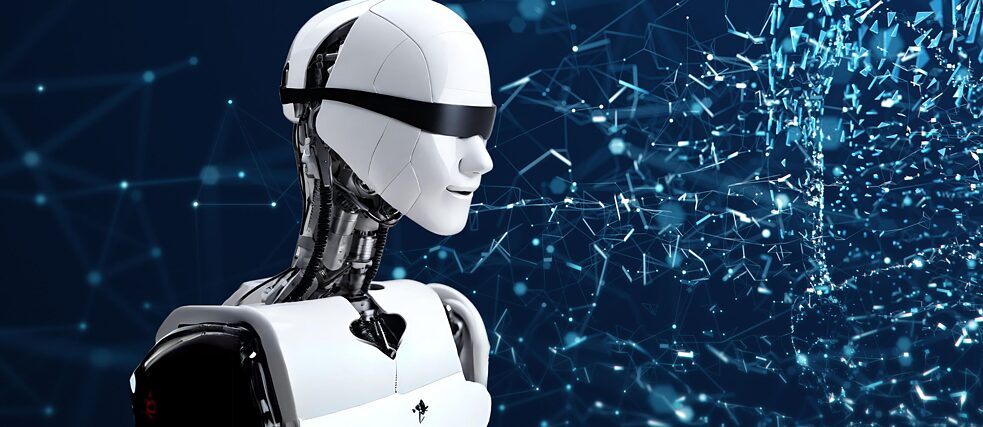The implications of AI bias
Intelligent but not Infallible

Bias is an inescapable feature of our daily lives and it affects everything from the songs we like to the presents we receive. As the use of AI becomes more omnipresent in our daily lives, we have to consider the implication of personal and societal bias creeping into AI systems and how it impacts us.
By Nidhi Singh
Imagine it’s Christmas and time for presents! While this usually would be a cause for celebration, you know that your aunt will bring you a tin of ‘Butter Biscuits’, yet again. In your youthful folly, you once mentioned your appreciation of the tin to your aunt when you were six years old and have faithfully received the same tin of biscuits every year now. In a simplistic understanding, this is how AI bias works. AI systems use training data to make decisions. Prejudices within this training data or the algorithmic process can manifest themselves in the form of AI bias.
Unpacking Bias in AI Systems
AI systems become biassed primarily because they learn from human-generated data, inheriting the biases prevalent in society. It's comparable to learning a rap song without having the exact lyrics—humans, when training AI, provide data that may contain biases, consciously or not. Like learning a close approximation of a rap song, AI learns patterns from data, which might not accurately represent reality. Over time, this learned bias perpetuates as the AI generates outcomes or recommendations based on these flawed patterns. Just as friends might unknowingly learn incorrect lyrics from your rendition, subsequent AI models inherit and propagate these biases unless actively corrected.Detecting AI bias poses a significant challenge. Much like confidently rapping incorrect lyrics until someone who knows the real song intervenes, bias in AI might go unnoticed. Unless individuals with a deep understanding of the true, unbiassed information examine the AI's outputs, it's entirely possible to go through life believing in the accuracy of biased results. This insidious nature of bias in AI makes it challenging to identify and rectify without specialised expertise or deliberate scrutiny. As long as biassed AI operates unchecked, it perpetuates inaccuracies, influencing decisions and perpetuating societal biases without us even realising it.
AI Bias
AI systems are rapidly being integrated into core social domains where they are used to make important decisions relating to the provision of opportunities and resources. Simply put, there are very serious consequences of AI bias in our everyday lives. Currently, AI systems are widely used by governments, businesses and other organisations to make decisions which directly impact people. These impacts may range from the availability of snacks we can purchase from a vending machine, to being denied jobs, healthcare or even bail in certain cases.AI bias has profound real-world impacts, notably perpetuating and worsening existing social inequalities. Societal consequences arise as biassed AI systems reflect and amplify the prejudices inherent in their training data. For instance, in hiring processes, biassed algorithms might favour certain demographics over others, perpetuating historical inequalities in employment. Imagine if only people with black hair were hired at McDonald’s and only people with brown hair were hired at KFC. This can deepen societal divides by limiting opportunities for marginalised groups, hindering social progress and reinforcing systemic discrimination.
Additionally, biassed AI systems also have economic impacts on individuals. For example, biassed credit scoring models might unfairly deny loans or financial services to individuals from marginalised communities, impacting their economic mobility. This not only affects individuals but also undermines trust in AI-driven systems, potentially leading to reduced adoption and innovation, ultimately impacting economic growth and development.
Can we fix it? Yes!
Countering AI bias demands a multifaceted approach, akin to seeking diverse opinions when tired of gifting socks to your father every birthday. One effective strategy is embracing inclusivity in the decision-making process. Just as consulting your uncle for fresh gifting ideas expands perspectives beyond your usual choices, involving diverse voices and perspectives during AI development mitigates bias. This inclusivity introduces a range of viewpoints that can help identify and rectify biases before they get embedded into the system.Moreover, employing technical solutions serves as another potent method to tackle AI bias. These tools act as safeguards, helping detect and mitigate biases in data or algorithms. Using technical tools like synthetic data may help in removing bias from the training data sets and make them more equitable.
AI with a heart
As the world moves towards an increased adoption of AI systems for a variety of tasks from driverless cars, to voice automations, the discussion around bias in AI systems becomes more important. Reducing bias requires a forward-looking approach that prioritises continuous improvement and ethical considerations throughout development and deployment stages. The design and deployment of AI systems must focus on not only minimising bias but also contributing to a more equitable and just society.Cultivating a culture of continuous learning ensures AI systems remain updated, relevant, and fair over time. So next time you see your aunt, try dropping hints about your favourite bakery every year, so that she remains updated with the latest information. Tackling this bias could be the answer to solving your Christmas dilemma and saving yourself from receiving one more biscuit tin to turn into a sewing box in the new year!